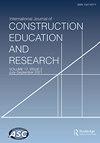Flexural Behavior of 3D printed Concrete Beam with Fiber Reinforcement
Q1 Social Sciences
International Journal of Construction Education and Research
Pub Date : 2021-04-08
DOI:10.30564/JCR.V2I2.2823
引用次数: 0
Abstract
Article history Received: 20 January 2021 Accepted: 2 March 2021 Published Online: 30 March 2021 3D printing with concrete is a promising new method for rapid, low cost construction. The flexural strengths for reinforced/unreinforced and 3D printed/cast concrete Warren trusses were tabulated and the failure mechanisms were reported. The types of reinforcement used were rebar(basalt and steel), and mesh (basalt and aramid). The effect of loading geometry and loading speed was measured for basalt mesh and aramid mesh composite, respectively. Due to the expected variation in flexure between samples, it cannot be said whether small differences for various tests are significant. Variation stems from a microscopically uneven surface and random inhomogeneities in the bulk of the tested material which act as a microcrack catalyst and propagator. Since the tested beams are short specimens the numerical findings of other studies will vary based on the intended design. This paper is intended to assess the performance of various reinforcements in a qualitative sense by comparing basalt reinforcement with other reinforcements. It was found that cast beams tolerated deflection better but had a similar flexure strength compared as the printed beams. The steel and basalt rebar reinforced beams had the highest flexure strengths where the traditional steel rebar reinforcement outperformed the basalt in flexure by 36% and the basalt outperformed the steel in deflection by 40%. The basalt mesh outperformed the cast and printed unreinforced bars by a small margin but had only 25% of steel rebars’ deflection at maximum flexure strength. The aramid mesh tolerated the biggest deflection out of any sample at 2.26 cm.3D打印纤维增强混凝土梁的受弯性能
文章历史收稿日期:2021年1月20日接收日期:2021年3月2日发布在线日期:2021年3月30日混凝土3D打印是一种有前途的快速,低成本施工新方法。将加筋/未加筋和3D打印/浇铸混凝土Warren桁架的抗弯强度制成表格,并报告其破坏机制。使用的钢筋类型是钢筋(玄武岩和钢)和网格(玄武岩和芳纶)。分别测定了玄武岩网和芳纶网复合材料加载几何形状和加载速度的影响。由于样品之间的预期挠度变化,不能说各种测试的小差异是否显著。变化源于微观上不均匀的表面和被测材料的随机不均匀性,这些不均匀性充当微裂纹催化剂和传播者。由于测试梁是短试件,其他研究的数值结果将根据预期设计而变化。本文将玄武岩加固与其他加固进行比较,从定性的角度评价各种加固的性能。结果表明,与印刷梁相比,浇铸梁具有更好的挠曲承载力,但抗弯强度相近。钢和玄武岩钢筋配筋梁的抗弯强度最高,传统钢筋配筋比玄武岩的抗弯强度高36%,玄武岩的挠度比钢的抗弯强度高40%。玄武岩网的性能比浇铸和打印的非钢筋要好,但在最大抗弯强度下,其挠度仅为钢筋的25%。芳纶网在2.26厘米处容忍最大的挠度。
本文章由计算机程序翻译,如有差异,请以英文原文为准。
求助全文
约1分钟内获得全文
求助全文
来源期刊

International Journal of Construction Education and Research
Social Sciences-Education
CiteScore
3.80
自引率
0.00%
发文量
19
期刊介绍:
The International Journal of Construction Education and Research is a respected international refereed journal that publishes original works that address cutting edge issues related to construction around the globe. The Journal supports the mission of the Associated Schools of Construction (ASC), a professional association comprised of about 100 universities and colleges. The ASC encourages the sharing of ideas and knowledge and promotes excellence in curricula, teaching, research and service relating to the construction industry.
 求助内容:
求助内容: 应助结果提醒方式:
应助结果提醒方式:


